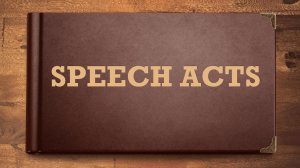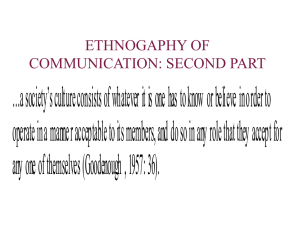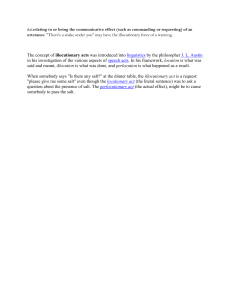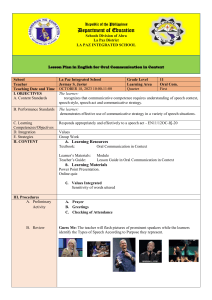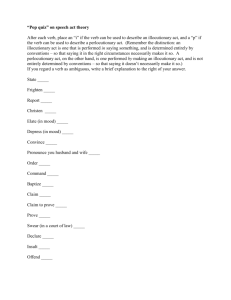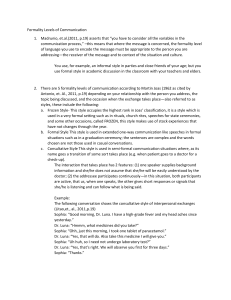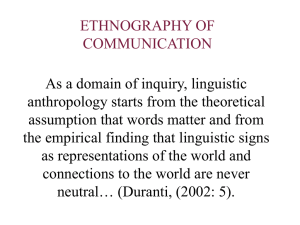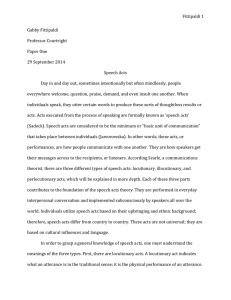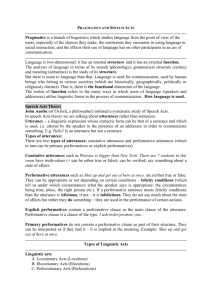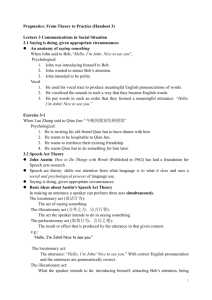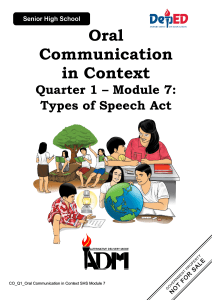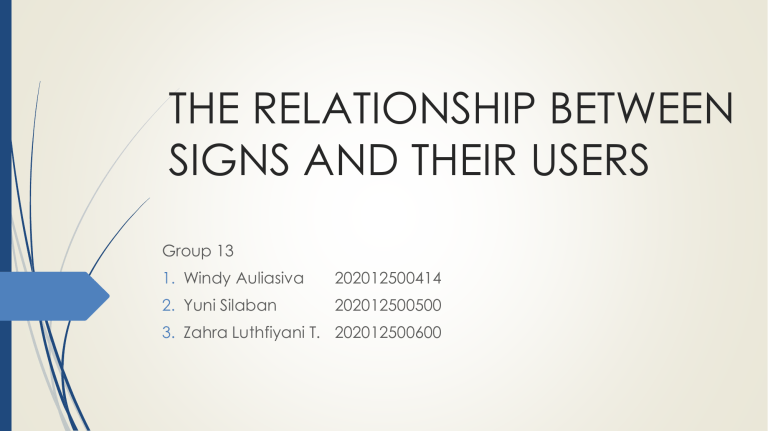
THE RELATIONSHIP BETWEEN SIGNS AND THEIR USERS Group 13 1. Windy Auliasiva 202012500414 2. Yuni Silaban 202012500500 3. Zahra Luthfiyani T. 202012500600 A. SPEECH ACTS In the speech situation we can know speech event, and in speech event we will find speech acts. So, when we want to talk in public, we have to know the situation first. Speech acts have 3 modal, there are: Locutions Illocutions Perlocutions 1. LOCUTIONARY ACTS The utterance of certain noises, certain words in a certain construction, and the utterance of them with a certain sense and a certain reference. Is the part of an utterance which is the thing which is actually being said. In other words one can define as a locutionary act as the act of producing sounds that have meaning. Example : The baby is laughing. The stone is black. There is dog over there. Sisi loves Jo. 2. ILLOCUTIONARY ACTS Illocutionary acts are acts which are internal to the locutionary act, in the sense that, if the contextual conditions are appropriate, once the locutionary act has been performed, so has the illocutionary act. Examples of such action can be an argument, a question, a promise, an order, an apology etc. in other words, an illocutionary act is the act performed by the act of speech. Example : It is raining. (in order) I’m dead tired. (contradict) I will come to your home. (a promise) 3. PERLOCUTIONARY ACTS Perlocutionary acts are acts performed by means of language, using language as a tool. Perlocutionary acts are not an integral part of the act itself performed by the speaker but rather refers to impression made on the listener. In other words, perlocutionary acts are the effect achieved by the speech act. Saying something will often, or even normally, produce certain consequential effects upon the feelings, thoughts or actions of the audience, or of the speaker, or of other persons. We shall call the performance of an act of this kind the performance of a perlocutionary act or perlocution. B. CONVERSATIONAL IMPLICATURES In pragmatics, conversational implicature is an indirect or implicit speech act: what is meant by a speaker's utterance that is not part of what is explicitly said. Propositions or assumptions not encoded, completely or incompletely, in what is actually said. Example (the conversation) : 1. Dr. Gregory House: "How many friends do you have?“ 2. Lucas Douglas: "Seventeen.“ 3. Dr. Gregory House: "Seriously? Do you keep a list or something?“ 4. Lucas Douglas: "No, I knew this conversation was really about you, so I gave you an answer so you could get back to your train of thought." C. GRICE'S CONVERSATIONAL MAXIMS 1. THE MAXIM OF QUALITY There is one supermaxim of quality: Try to make your contribution one that is true. Do not say what you believe to be false. Do not say that for which you lack evidence. Example : 2. THE MAXIM OF QUANTITY Make your contribution as informative as is required for the current purposes of the exchange in which you are engaged. Do not make your contribution more informative than is required. Example : 3. THE MAXIM OF RELATION Be Relevant Example : 4. THE MAXIM OF MANNER There is one supermaxim of manner: Be perspicuous. Avoid obscurity of expression. Avoid ambiguity. Be brief. Be orderly. Example : D. CONCLUDE
